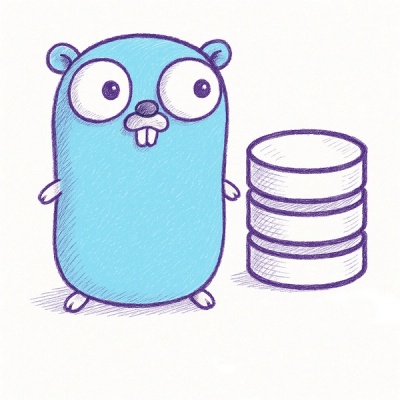
Security News
Browserslist-rs Gets Major Refactor, Cutting Binary Size by Over 1MB
Browserslist-rs now uses static data to reduce binary size by over 1MB, improving memory use and performance for Rust-based frontend tools.
Redis component for NestJs.
Yarn
yarn add nestjs-redis
NPM
npm install nestjs-redis --save
Let's register the RedisModule in app.module.ts
import { Module } from '@nestjs/common';
import { RedisModule } from 'nestjs-redis';
@Module({
imports: [RedisModule.register(options)],
})
export class AppModule {}
With Async
import { Module } from '@nestjs/common';
import { RedisModule } from 'nestjs-redis';
@Module({
imports: [
RedisModule.forRootAsync({
useFactory: (configService: ConfigService) => configService.get('redis'), // or use async method
//useFactory: async (configService: ConfigService) => configService.get('redis'),
inject: [ConfigService],
}),
],
})
export class AppModule {}
And the config file look like this With single client
export default {
host: process.env.REDIS_HOST,
port: parseInt(process.env.REDIS_PORT),
db: parseInt(process.env.REDIS_DB),
password: process.env.REDIS_PASSWORD,
keyPrefix: process.env.REDIS_PREFIX,
};
Or;
export default {
url: 'redis://:authpassword@127.0.0.1:6380/4',
};
With custom error handler
export default {
url: 'redis://:authpassword@127.0.0.1:6380/4',
onClientReady: (client) => {
client.on('error', (err) => {});
},
};
With multi client
export default [
{
clientName: 'test1',
url: 'redis://:authpassword@127.0.0.1:6380/4',
},
{
clientName: 'test2',
host: process.env.REDIS_HOST,
port: parseInt(process.env.REDIS_PORT),
db: parseInt(process.env.REDIS_DB),
password: process.env.REDIS_PASSWORD,
keyPrefix: process.env.REDIS_PRIFIX,
},
];
And use in your service
import { Injectable } from '@nestjs/common';
import { RedisService } from 'nestjs-redis';
@Injectable()
export class TestService {
constructor(private readonly redisService: RedisService) {}
async root(): Promise<boolean> {
const client = await this.redisService.getClient('test');
return true;
}
}
Options
interface RedisOptions {
/**
* client name. default is a uuid, unique.
*/
clientName?: string;
url?: string;
port?: number;
host?: string;
/**
* 4 (IPv4) or 6 (IPv6), Defaults to 4.
*/
family?: number;
/**
* Local domain socket path. If set the port, host and family will be ignored.
*/
path?: string;
/**
* TCP KeepAlive on the socket with a X ms delay before start. Set to a non-number value to disable keepAlive.
*/
keepAlive?: number;
connectionName?: string;
/**
* If set, client will send AUTH command with the value of this option when connected.
*/
password?: string;
/**
* Database index to use.
*/
db?: number;
/**
* When a connection is established to the Redis server, the server might still be loading
* the database from disk. While loading, the server not respond to any commands.
* To work around this, when this option is true, ioredis will check the status of the Redis server,
* and when the Redis server is able to process commands, a ready event will be emitted.
*/
enableReadyCheck?: boolean;
keyPrefix?: string;
/**
* When the return value isn't a number, ioredis will stop trying to reconnect.
* Fixed in: https://github.com/DefinitelyTyped/DefinitelyTyped/pull/15858
*/
retryStrategy?(times: number): number | false;
/**
* By default, all pending commands will be flushed with an error every
* 20 retry attempts. That makes sure commands won't wait forever when
* the connection is down. You can change this behavior by setting
* `maxRetriesPerRequest`.
*
* Set maxRetriesPerRequest to `null` to disable this behavior, and
* every command will wait forever until the connection is alive again
* (which is the default behavior before ioredis v4).
*/
maxRetriesPerRequest?: number | null;
/**
* 1/true means reconnect, 2 means reconnect and resend failed command. Returning false will ignore
* the error and do nothing.
*/
reconnectOnError?(error: Error): boolean | 1 | 2;
/**
* By default, if there is no active connection to the Redis server, commands are added to a queue
* and are executed once the connection is "ready" (when enableReadyCheck is true, "ready" means
* the Redis server has loaded the database from disk, otherwise means the connection to the Redis
* server has been established). If this option is false, when execute the command when the connection
* isn't ready, an error will be returned.
*/
enableOfflineQueue?: boolean;
/**
* The milliseconds before a timeout occurs during the initial connection to the Redis server.
* default: 10000.
*/
connectTimeout?: number;
/**
* After reconnected, if the previous connection was in the subscriber mode, client will auto re-subscribe these channels.
* default: true.
*/
autoResubscribe?: boolean;
/**
* If true, client will resend unfulfilled commands(e.g. block commands) in the previous connection when reconnected.
* default: true.
*/
autoResendUnfulfilledCommands?: boolean;
lazyConnect?: boolean;
tls?: tls.ConnectionOptions;
sentinels?: Array<{ host: string; port: number }>;
name?: string;
/**
* Enable READONLY mode for the connection. Only available for cluster mode.
* default: false.
*/
readOnly?: boolean;
/**
* If you are using the hiredis parser, it's highly recommended to enable this option.
* Create another instance with dropBufferSupport disabled for other commands that you want to return binary instead of string
*/
dropBufferSupport?: boolean;
/**
* Whether to show a friendly error stack. Will decrease the performance significantly.
*/
showFriendlyErrorStack?: boolean;
}
That's it!
FAQs
a NestJS ioRedis module
The npm package nest-redis receives a total of 19 weekly downloads. As such, nest-redis popularity was classified as not popular.
We found that nest-redis demonstrated a not healthy version release cadence and project activity because the last version was released a year ago. It has 1 open source maintainer collaborating on the project.
Did you know?

Socket for GitHub automatically highlights issues in each pull request and monitors the health of all your open source dependencies. Discover the contents of your packages and block harmful activity before you install or update your dependencies.

Security News
Browserslist-rs now uses static data to reduce binary size by over 1MB, improving memory use and performance for Rust-based frontend tools.

Research
Security News
Eight new malicious Firefox extensions impersonate games, steal OAuth tokens, hijack sessions, and exploit browser permissions to spy on users.

Security News
The official Go SDK for the Model Context Protocol is in development, with a stable, production-ready release expected by August 2025.